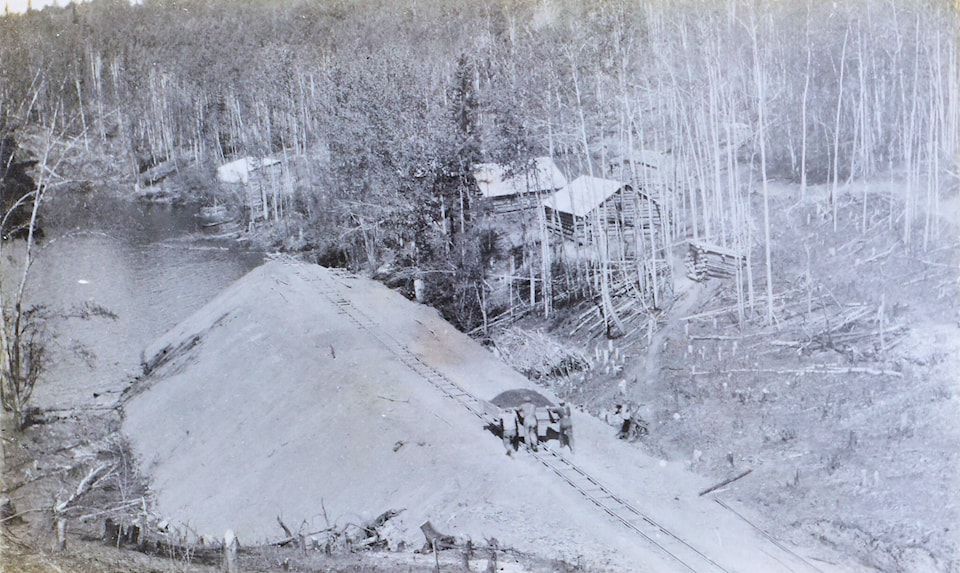© 2020 Lakes District Museum Society
A new breed of pioneer was born in the 19th Century, one who sought not to explore Canada but link it by rail.
The enthusiasm for railways reached �������� Lake in the early years of the 20th Century, when surveyors for the Grand Trunk Pacific passed through. Today the region is served by a single rail line, but several were initially proposed.
Edgar Dewdney and Arthur Phillip Luxton were members of British Columbia’s political elite. Dewdney was a surveyor and politician who finished his working career in 1897 as BC’s Lieutenant-Governor. Luxton, meanwhile, was a distinguished solicitor and King’s Counsellor who represented the province in several high profile cases.
The two men knew each other, attending the same Union Club balls and serving on the executive of the Victoria Cricket Club. In January 1906, they jointly petitioned the BC Legislative Assembly to incorporate a company “with power to build, equip, maintain and operate a line or lines of railway” from Bella Coola to Fraser Lake. At the time, Bella Coola (located at the head of Burke Channel) was being touted as British Columbia’s next great port and gateway to the “fabulous Ootsa Lake country.”
The railway proposed by Dewdney and Luxton was to start at the mouth of the Bella Coola River and travel about 30 miles upstream before “proceeding in a north-easterly direction by the most feasible route” through the Lakes District to Fraser Lake. From there, Dewdney and Luxton envisioned the line branching west to the Telkwa River and east to Fort George (now Prince George) on the Fraser.
The Dewdney/Luxton petition was briefly a topic of debate in the BC Legislature, but their company never laid a rail. In 1913, though, another firm announced plans to link Bella Coola and the Central Interior via the Lakes District.
The Pacific & Hudson Bay Railway hoped to build a line from Burke Channel to Fort Fraser, and from there north to Fort Dunvegan on the Peace River. Like its predecessor, the P&HB ever materialized, though there are indications the company may have completed some survey work along the route.
Publications of the day don’t say why these ra ilways weren’t built. It’s probably safe to assume, however, that changes in public policy were at least partially to blame.
Throughout the 19th Century (and even in the early years of the 20th), governments in Canada and the US saw trans-continental railway construction as a means of strengthening sovereignty and promoting settlement in the ‘Wild West.’ Lacking the necessary financial resources, they looked to the private sector for help. Yet industry initially had little appetite for such ventures; laying expensive track through sparsely populated areas to destinations with questionable futures made little economic sense, at least in the short term.
When private investors balked at the risks associated with railway construction, governments in both countries sought to ‘sweeten the pot’ with tax breaks and land grants. The concessions they offered were considerable; in 1881, an act of parliament gave the Canadian Pacific Railway title to 25 million acres and $25 million dollars in exchange for building this country’s first trans-continental line.
Subsidization on such a grand scale attracted speculators as well as nation-builders. Railways became the new ‘gold rush,’ and more than a half dozen were proposed in western Canada by investors hoping to cash in on government largesse. The petition Dewdney and Luxton presented to the Legislature in 1906 suggests they may have been part of this crowd. In it, they sought corporate license “to acquire and receive from any Government, corporation, or persons grants of land, money, bonuses, privileges or other assistance in aid of the construction of the Company’s undertaking” to build the Bella Coola and Fraser Lake Railway.
Alas, as most companies soon discovered, building a profitable railway through the Lakes District was as difficult as finding a paying gold claim. By 1911, the practice of giving land grants to companies in exchange for railway construction had fallen out of favour. The optimism surrounding Bella Coola had also waned; the Grand Trunk Pacific Railway was already under construction, and the new city of Prince Rupert showed more promise.



